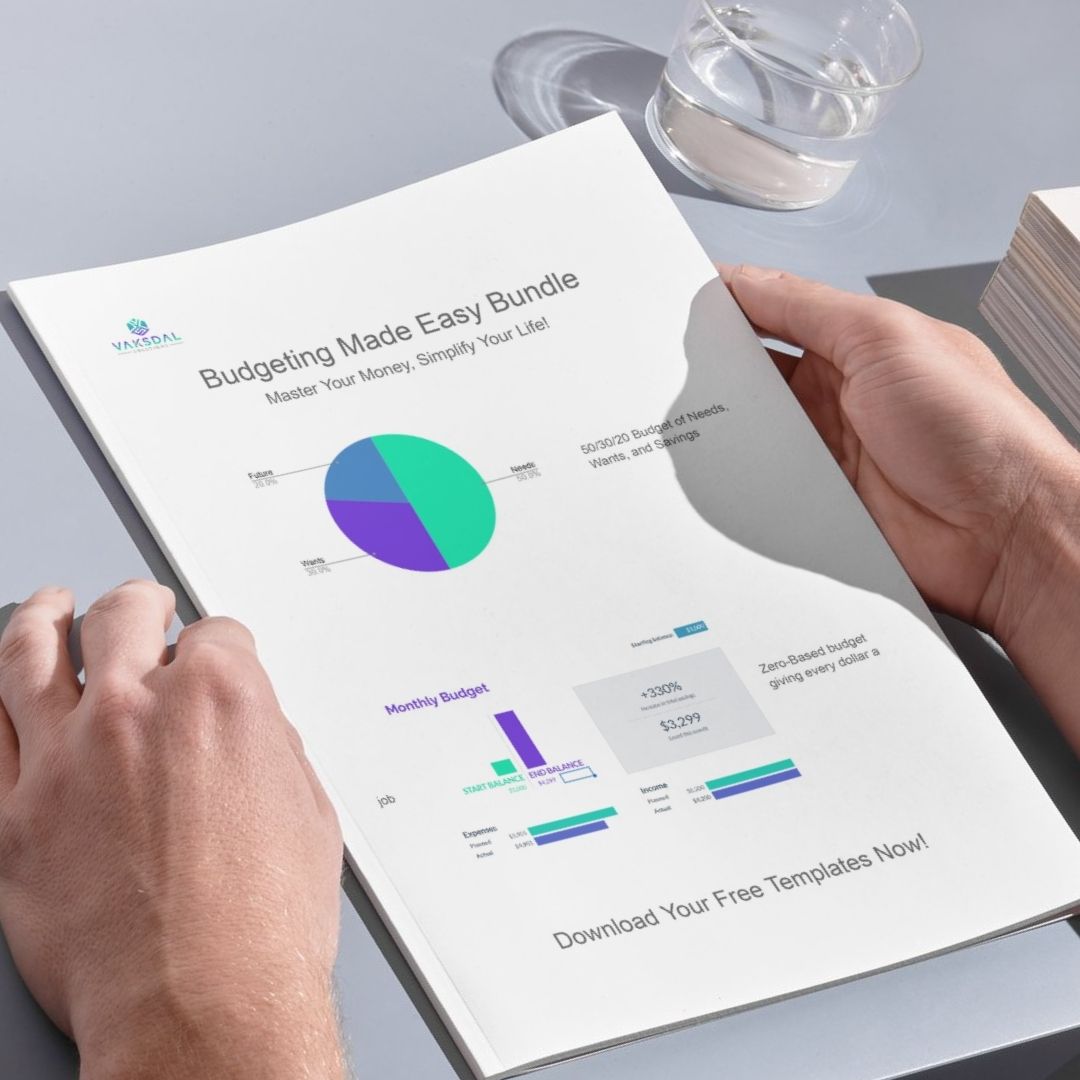Budgeting is often considered the first step toward financial success, but many people feel daunted or overwhelmed by it. The truth is, budgeting isn’t about restriction—it’s about creating a plan that allows you to prioritize, save, and feel confident with your money choices. With the right budget in place, you gain the power to control your finances rather than letting them control you. For those starting on their financial journey, budgeting is a practical tool that can make a real difference in achieving goals, avoiding debt, and finding peace of mind.
- Why Budgeting is the First Step to Financial Success
Budgeting might seem like a basic skill, but it’s the foundation that makes everything else possible financially. Knowing where your money is going is essential for saving, investing, and achieving financial independence. Think of budgeting as the GPS for your financial journey—it helps you understand where you are and shows you a clear path to where you want to be.
Without a budget, it’s easy to overspend or feel like your money just “disappears.” A solid budget provides you with structure, allowing you to break the paycheck-to-paycheck cycle, tackle debt strategically, and start building an emergency fund or retirement savings.
Think of budgeting like a workout plan: going to the gym and randomly lifting weights every now and then won’t get you the results you want. To make real progress, you need an organized plan that maximizes your time, builds your strength systematically, and keeps you on track toward your goals. Budgeting does the same thing for your finances—it gives every dollar a purpose and allows you to focus on what matters most, whether it’s paying off debt, building wealth, or creating more financial freedom for yourself.
Whether you’re just getting started with budgeting or looking for a refresh, choosing a budgeting style that aligns with your personality and lifestyle can make all the difference.
- Different Budgeting Methods and Who They Work Best For
Each budgeting style has its unique approach to managing money. By finding a method that resonates with your habits and mindset, budgeting becomes more sustainable and fulfilling.
- 50/30/20 Budgeting:
-
- Overview: The 50/30/20 budget is designed to keep things simple and flexible. In this approach, 50% of your income is allocated to “needs” (essentials like rent, groceries, and utilities), 30% goes to “wants” (entertainment, dining out, or hobbies), and 20% is set aside for savings or debt repayment.
- Ideal for: This method works well for those who want a clear structure without too many restrictions. It’s especially useful if you have a consistent income and prefer a flexible approach where not every expense needs tracking.
- Personality Fit: This is a good match for someone who values balance and wants the freedom to spend on non-essentials without feeling guilty, while still making progress toward savings goals.
- Zero-Based Budgeting:
-
- Overview: Zero-based budgeting is about giving every dollar a job. With this method, all income is allocated to specific categories, and at the end of the month, the budget should equal zero.
- Ideal for: This method is excellent for people who thrive on organization, control, and detailed tracking. It’s also beneficial for anyone with variable income who wants to ensure they’re maximizing each dollar.
- Personality Fit: Zero-based budgeting is great for detail-oriented individuals who like to plan everything meticulously. If you’re someone who feels at ease when every penny has a purpose, this budget may be your perfect match.
- Envelope Budgeting:
-
- Overview: In the envelope budgeting system, cash is divided into physical or digital “envelopes” based on spending categories. You can only spend what’s in each envelope, so once a category is out of cash, there’s no more spending until the next month.
- Ideal for: This is a hands-on approach for anyone struggling with overspending or those who prefer the visual control of knowing exactly how much they have for each category.
- Personality Fit: Envelope budgeting appeals to those who find it easier to manage money by setting clear spending limits. It’s especially useful for those who tend to spend impulsively and need a visual tool to help stay within their budget.
- Tools to Help You Stick to Your Budget
Using templates or apps can make budgeting much simpler. With the right tools, tracking and adjusting your budget becomes a smoother process, helping you stay on track.
- Budget Templates: Start your budgeting journey with my tailored templates designed to walk you through the budgeting process step-by-step. With easy-to-fill categories and clear instructions, these templates are a perfect fit for anyone new to budgeting or looking for a solid structure to start fresh.
- Budgeting Apps: Two standout budgeting apps, EveryDollar and YNAB (You Need a Budget), provide invaluable support for creating, tracking, and adjusting your budget. The EveryDollar app offers simplicity, focusing on zero-based budgeting and easy tracking, while YNAB is ideal for those who like detailed planning and control. Both apps can provide guidance, reminders, and insights, making it easier to reach your budgeting goals.
Conclusion:
No matter where you’re starting from, budgeting can bring clarity and freedom to your financial life. It’s not a one-size-fits-all journey; finding the budgeting style that works best for you is key to making it a long-term habit. Take the time to explore different methods, experiment with tools, and remember that a budget is a tool to empower you, not restrict you. Start small, stay consistent, and watch as budgeting transforms not only your finances but also your peace of mind.



0 comments